
Last year, businesses were deeply concerned about how to survive COVID-19. In many instances, the fast-paced adoption of digital technology turned out to be a working business survival strategy. As 2021 marches on, and with more people getting vaccinated globally, it’s important to assess how long the post-COVID recovery will take for small and medium-sized businesses in the United States. This is impossible without understanding how seriously the pandemic has affected business operations or looking into the areas that were hit the hardest.
In previous airSlate surveys, we focused on various aspects of how businesses pivoted during the pandemic using specific digital technologies. You can learn more about how US businesses and individuals were using eSignature during COVID-19. Before that, airSlate also looked into how consumers prioritized cloud collaboration amidst remote work. We continue to explore the impact of COVID-19 by providing insights into the pandemic survival of SMBs.
Our team at airSlate recently surveyed 500 US business owners (aged 18 – 65+) on the challenges they faced during the pandemic and how the digitization of their most important business processes helped them survive. In this post, we’ll highlight our key findings in the survey by Dynata.
Survey results: how US businesses pivoted during the pandemic using digital solutions
In this survey, we were looking to answer one specific question – has digitization helped US businesses survive the global health crisis? And what types of digital solutions were the most beneficial?
Research indicates that prior to the pandemic, 52% of business owners had not digitized their businesses processes, nor had plans to do so. As a result of not having the tech in place to digitize and due to being dependent on walk-in customers, 74% of businesses had to shut down during the pandemic.
Early investment in digitization of the most critical business processes could facilitate faster recovery for 55% of business owners. In fact, only 53% of businesses were digitized prior to the pandemic, with most digitization happening for orders, purchasing, and sales (43%). On top of that, 54% of businesses implemented eSignature during the pandemic, noting that its increased efficiency and productivity benefited their business.
Were US businesses ready to face the pandemic?
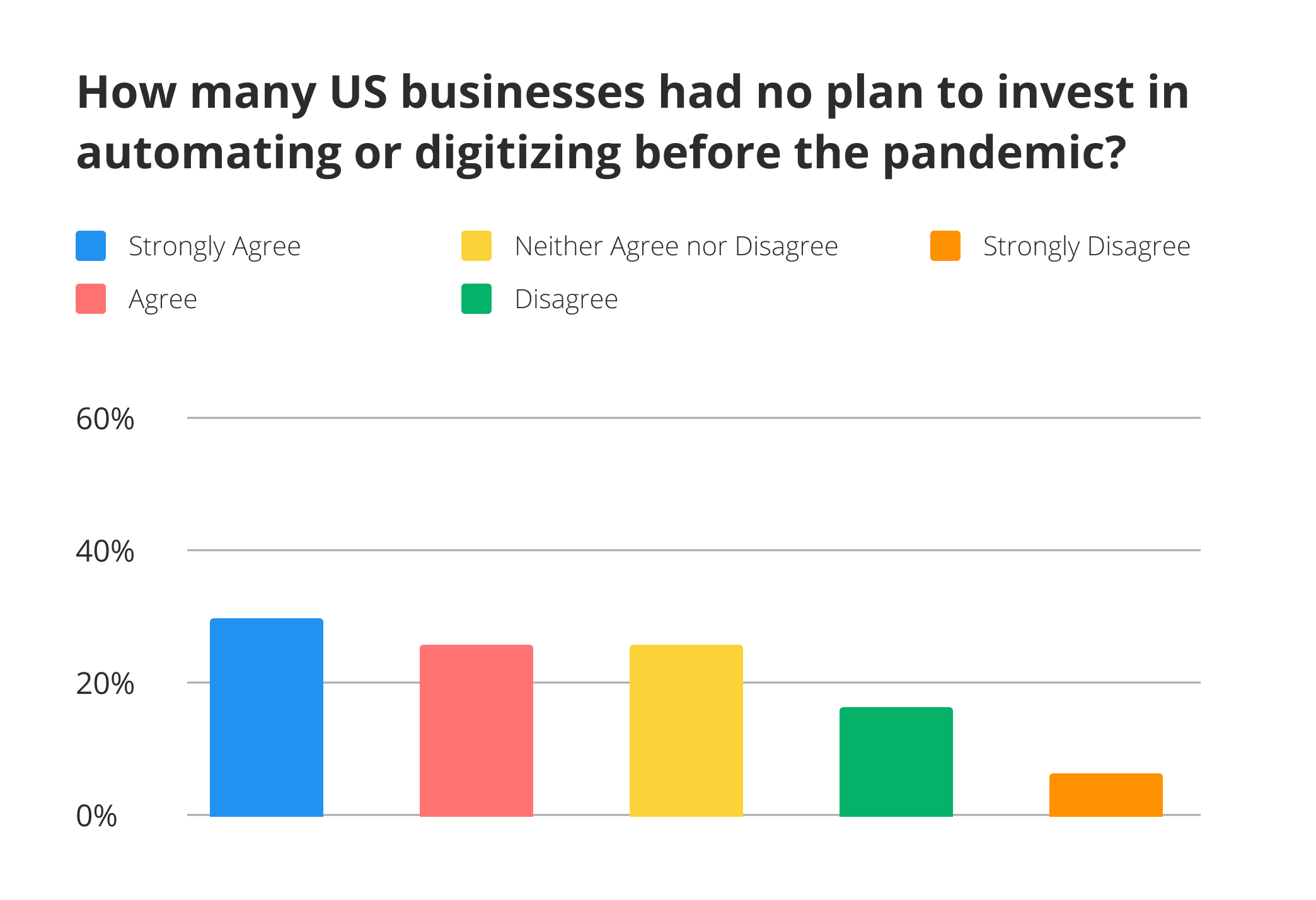
Let’s start by looking into whether US businesses were ready to face the crisis. According to our data, 66% of business owners believed they were prepared to survive the pandemic. Yet, 52% of respondents experienced issues while servicing customers during the lockdowns, and only 29% of respondents said they weren’t affected.
5 reasons why most US businesses closed during the pandemic
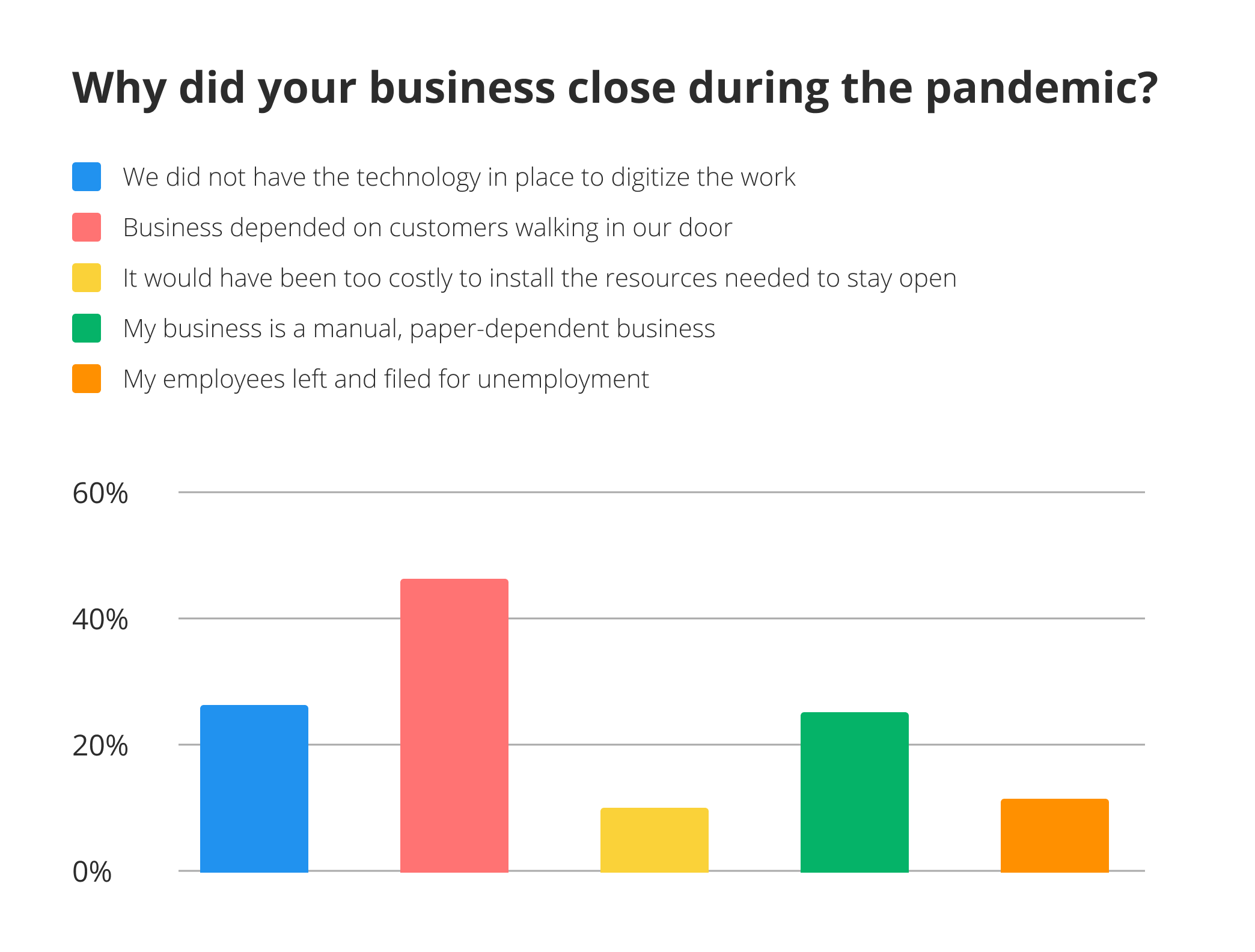
When asked why their business closed, 74% of cases accounted for not having the tech in place to digitize and were dependent on walk-in customers. Other reasons included the high cost of resources required to stay open (10%), dependence on manual, paper-based processes (25%), and employee resignations/filing for unemployment (12%).
How many US businesses were digitized before the pandemic?
According to our data, 53% of businesses were digitized prior to the pandemic, meaning they automated manual and/or paper-based processes using digital/online solutions.
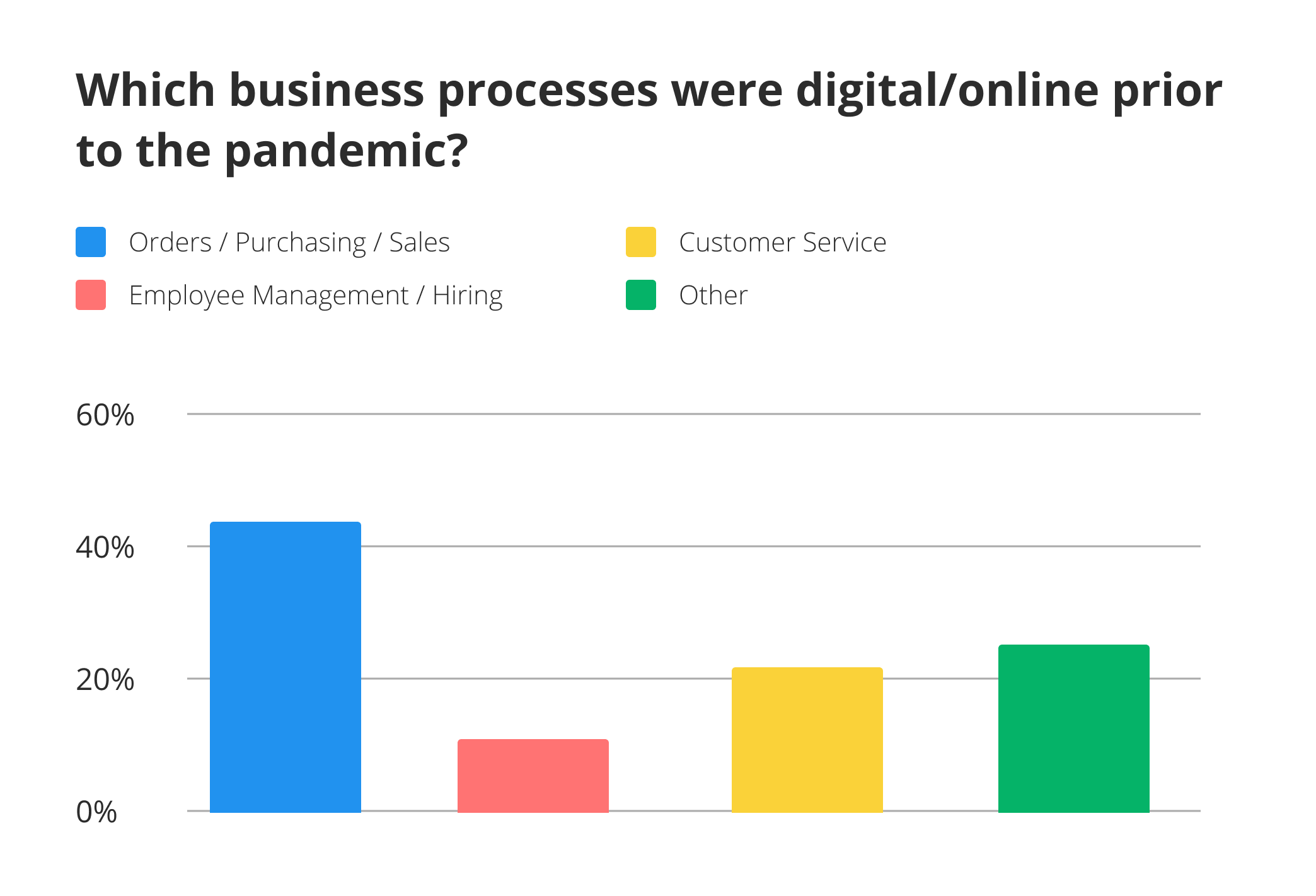
For particular business processes that were digital or online prior to the pandemic, 43% accounted for orders, purchasing, and sales. In addition, 21% of businesses invested in digitizing customer service, 12% digitized their employee management and hiring. Another 24% of respondents didn’t specify the areas their digitization initiatives concerned.
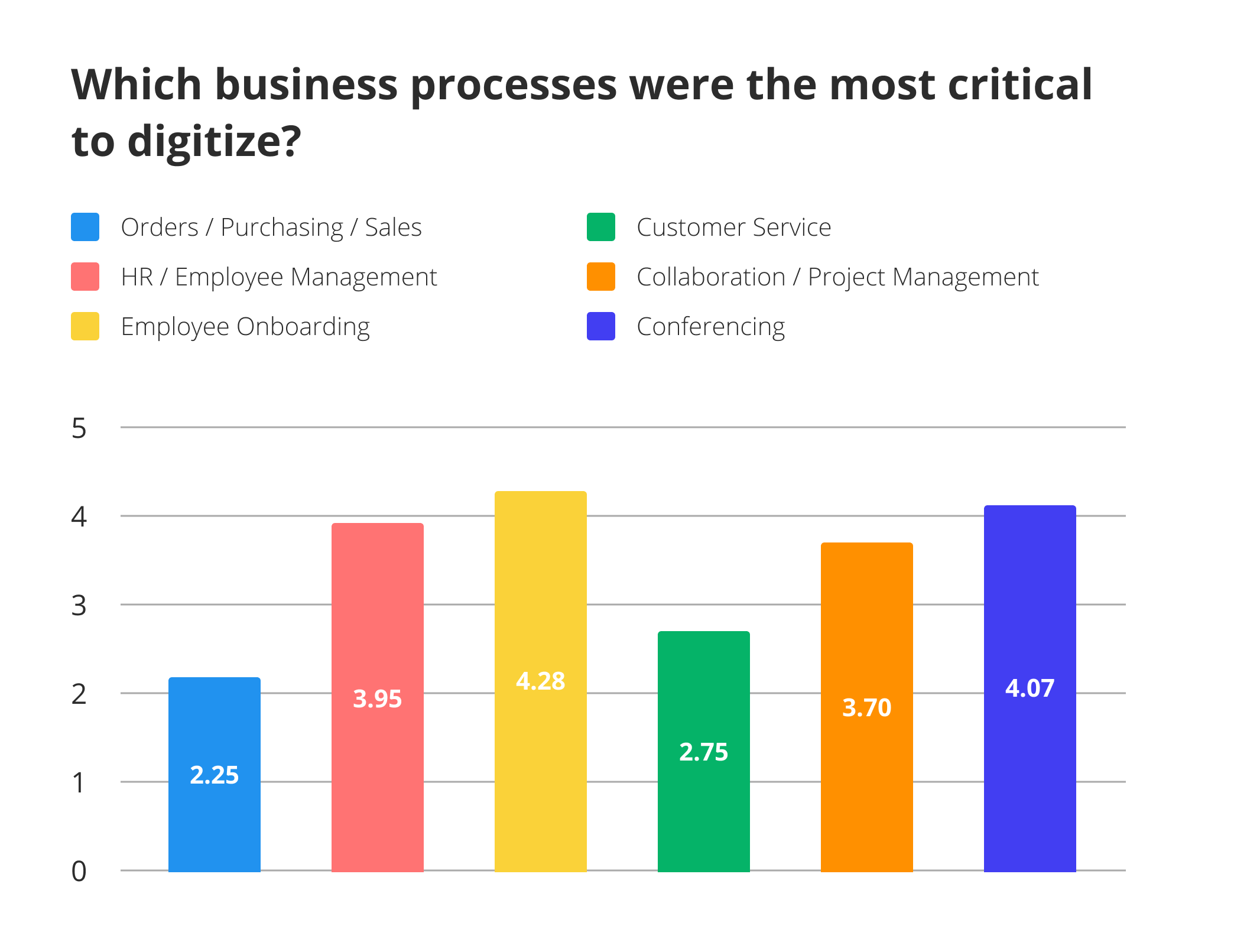
Employee onboarding and conferencing ranked among the most critical processes to have been digitized during the pandemic. Next followed collaboration and project management, HR and employee management, customer service, and purchasing and sales.
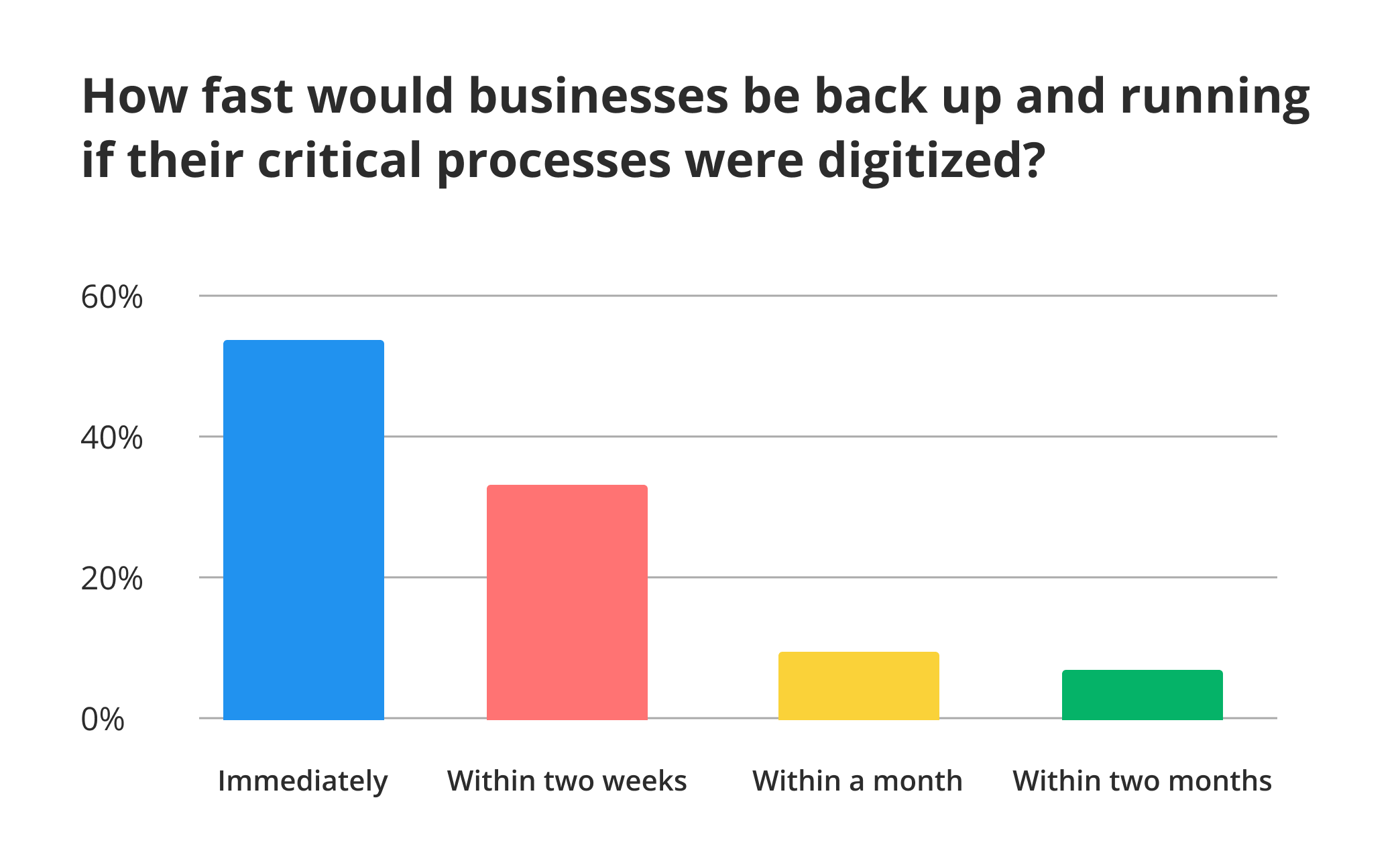
The impact of digitization is hard to overestimate as 55% of US businesses said they would be back up and running immediately had they digitized their critical processes beforehand. 28% believed the recovery process would take up to two weeks. Finally, 9% said it would take them a month, while the least optimistic 7% of respondents said they’d be back to normal within two months.
Before the pandemic, only 28% of businesses were completely paperless, while 25% said they were partially paperless. As of today, 66% of respondents admit that they still require physically signed documents. And yet, despite significant institutional inertia surrounding the transition to a paperless office, many businesses did implement eSignature over the course of the pandemic.
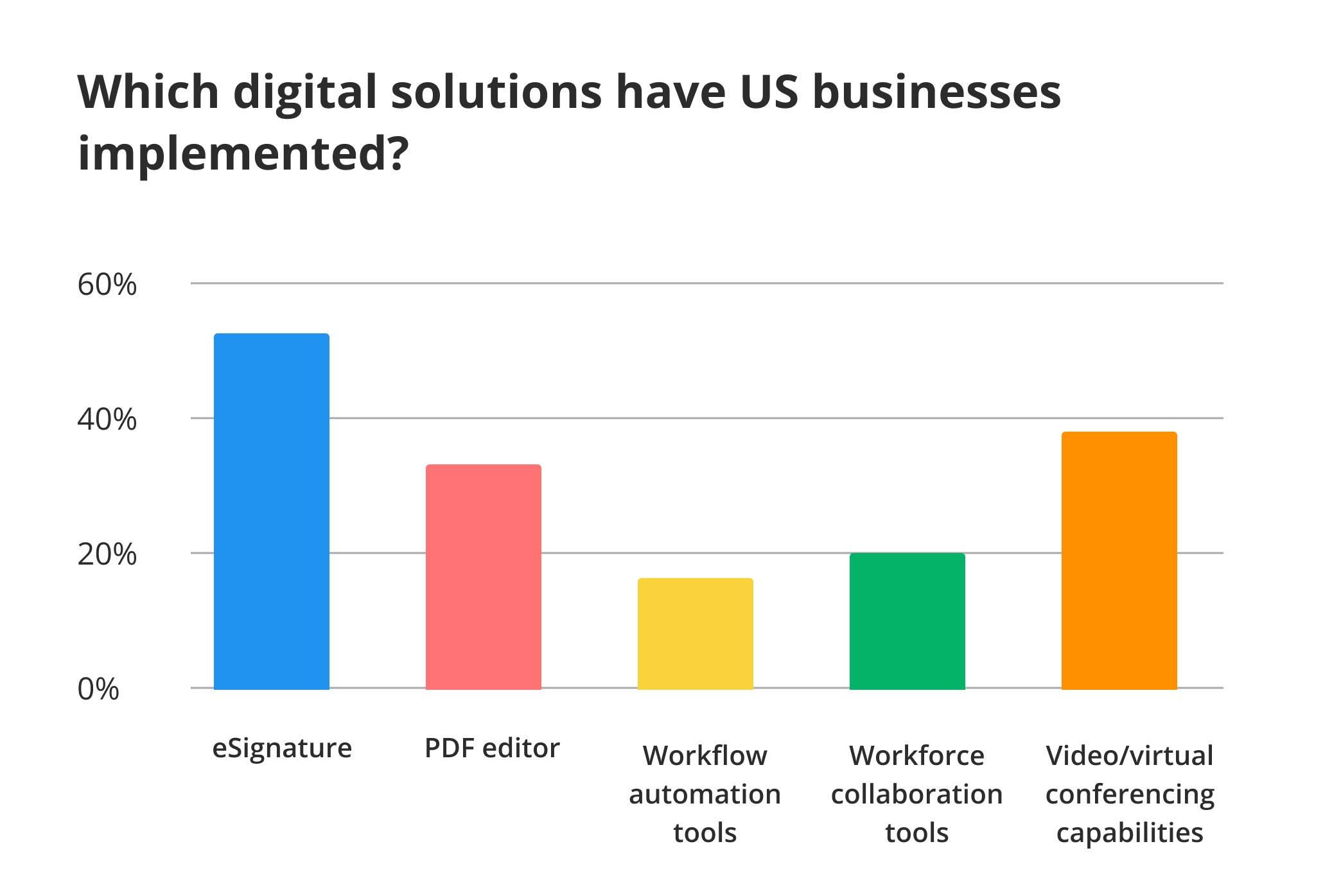
According to our data, 54% of businesses leveraged eSignature solutions, while 38% deployed video/virtual conferencing capabilities. PDF editors turned out to be less popular – only 35% of respondents said they implemented these solutions. Workforce collaboration (20%) and workflow automation (17%) tools were the least popular of the bunch.
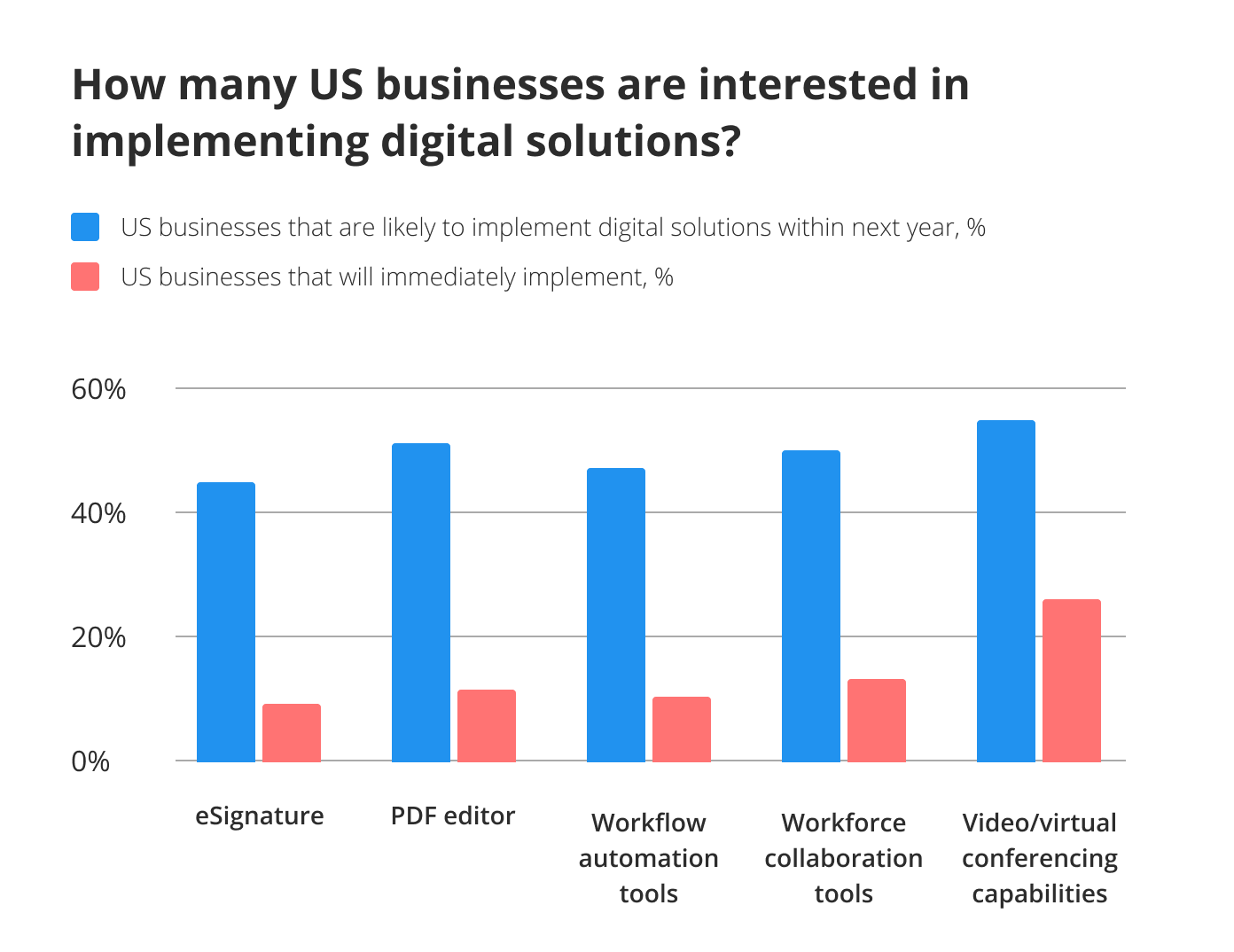
Of those interested in implementing each type of digital solution within a timeline ranging between “immediately” and “the next year”, 44% of businesses accounted for eSignature, 51% for PDF editors, 46% for workflow automation tools, 50% for workforce collaboration tools, and 56% for video/virtual conferencing capabilities.
How has adopting digital solutions benefited US businesses?
One of the main survey questions we wanted to answer was how exactly leveraging digital solutions benefited US businesses. The respondents evaluated eSignature, PDF editors, and workflow automation tools based on how these solutions could increase efficiency and productivity, improve employee satisfaction, deliver proven ROI, and enhance customer engagement.
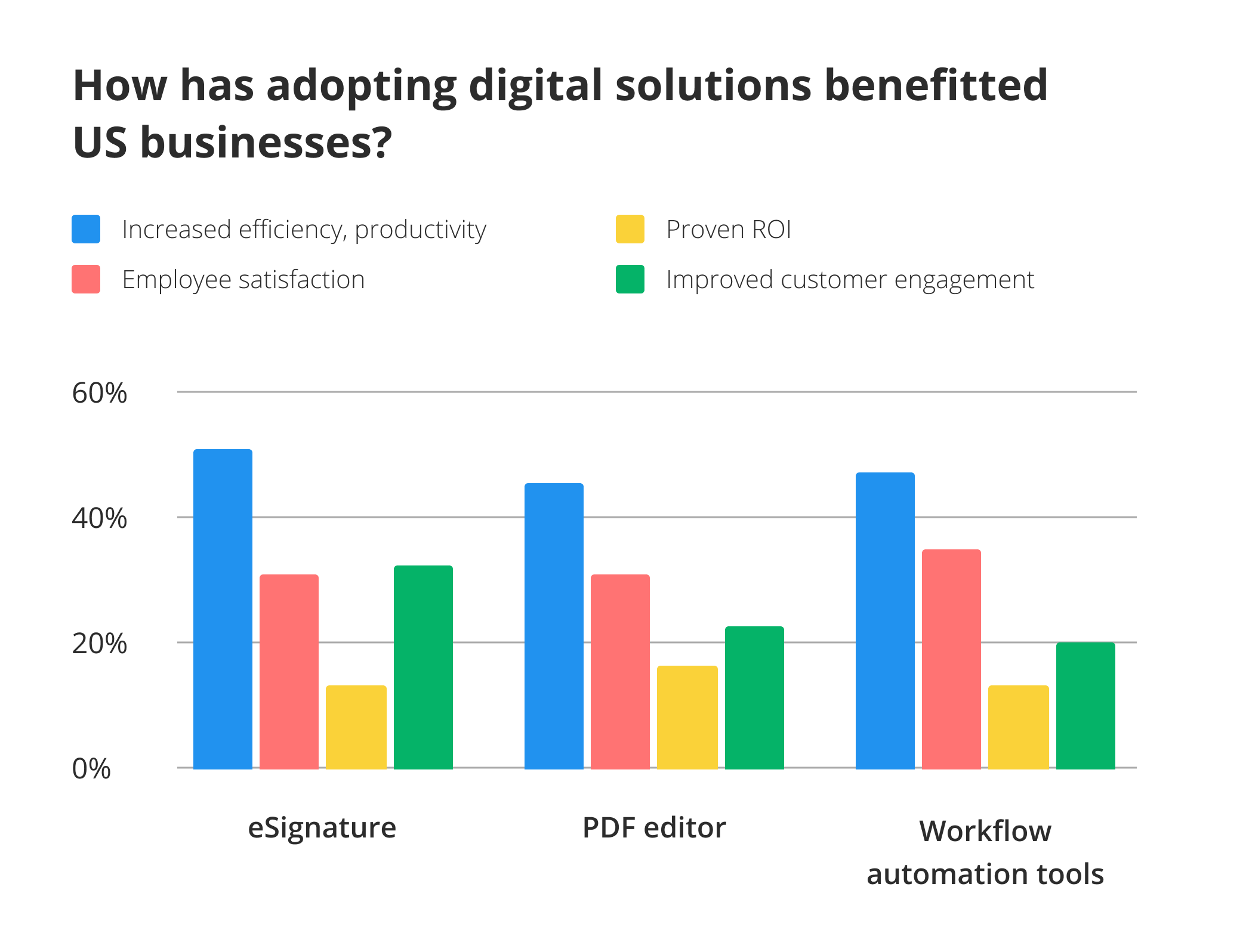
In most valid cases, every digital solution had significantly increased efficiency and productivity (eSignature – 51%, PDF editor – 45%, and workflow automation tools – 46% of cases) as well as improved employee satisfaction (33%, 33%, and 37% of cases, respectively). eSignature turned out to be extremely useful in improving customer engagement (in 34% of cases).
In conclusion
The pandemic caught many SMBs in the US off guard, as 52% of them had not digitized their operations, nor planned to do so before COVID-19 emerged. Sadly, this only made things worse later on, as 74% of businesses had to shut down due to not having the tech in place to digitize their dependency on walk-in customers.
Digitization of the most important business processes could have helped 55% of businesses be back up and running immediately. For a little less than one-third (28%) of respondents, the recovery process would have only taken up to two weeks had they looked into their available digitization options.
Before the pandemic, 43% of digitization initiatives primarily dealt with orders, purchasing, and sales. However, during the pandemic, most businesses felt the pressing need to digitize employee onboarding and conferencing.
The survey indicates that a little more than half of the businesses (54%) leveraged eSignature solutions in 2020, while the other 44% of respondents said they intended to do so within the next year. Deploying eSignature has significantly increased efficiency and productivity in 51% of cases, and turned out to be extremely successful in improving customer engagement for 34% of cases.
As for other digital solutions, many businesses are looking into implementing PDF editors (51%) and workflow automation tools (46%) within the next year. It is evident that post-COVID-19 recovery is inseparable from these cornerstone digital solutions, and businesses will only continue to broaden their usage of digital apps in the years to come.
*Data powered by Dynata (www.dynata.com), the world’s
largest first-party data and insights platform
- Survey results: how US businesses pivoted during the pandemic using digital solutions
- Were US businesses ready to face the pandemic?
- 5 reasons why most US businesses closed during the pandemic
- How many US businesses were digitized before the pandemic?
- How did going paperless help US businesses navigate the pandemic?
- How has adopting digital solutions benefited US businesses?
- In conclusion

